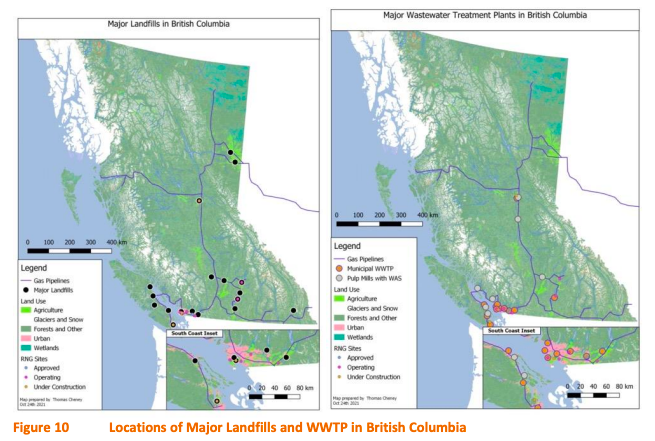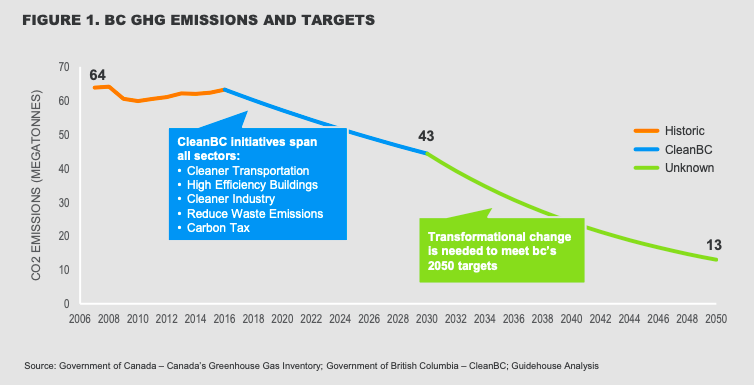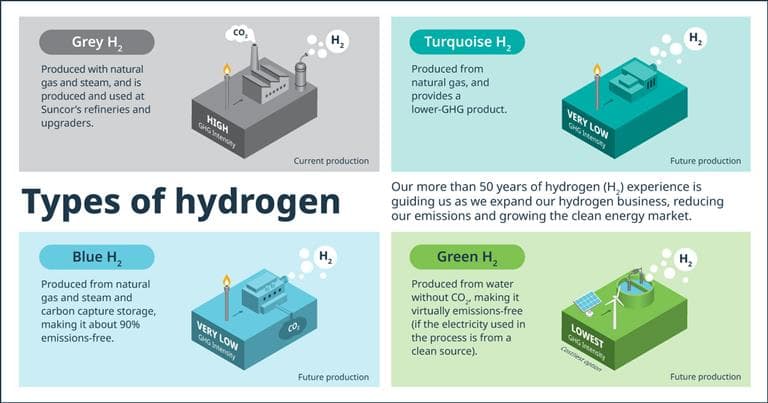Using Existing Gas Systems for Renewable and Low-Carbon Gases
Gas from decomposing organic waste in British Columbia is being used to power homes, instead of allowing this carbon to be released into the atmosphere. Clean50 Honouree Joe Mazza explains how these low-carbon gases are changing the province’s energy sector.
The existing gas system in British Columbia plays an integral role in meeting the province’s energy needs by delivering reliable energy to heat B.C. homes and businesses. A powerhouse of energy delivery, FortisBC’s gas system moves and stores energy effectively and affordably, giving it the capacity to meet heavy seasonal demands and the resiliency to deliver energy even during extreme weather events.
With a heightened need to help customers reduce their carbon emissions, we’re harnessing those strengths by developing it as a renewable energy delivery system. Our gas system already carries growing quantities of renewable and low-carbon gases1, including Renewable Natural Gas (RNG) today and we anticipate carrying zero-carbon hydrogen in the future.
By producing RNG from decomposing organic waste, we’re making use of carbon which would otherwise escape into the atmosphere. When bacteria break down organic waste from sources such as landfill sites, agricultural waste and wastewater from treatment facilities, it produces a biogas mostly made of methane.
We work with local farms, landfills, green energy companies and municipalities to capture and purify this methane to create energy for our customers. Renewable Natural Gas blends seamlessly into the gas system and displaces conventional natural gas extracted from underground. This drives down the carbon content of the gas system overall and provides customers with a simple way to reduce their greenhouse (GHG) emissions with no required retrofits to homes or community buildings.

Just as RNG provides a way to decarbonize, it also provides a pathway for helping achieve British Columbia’s CleanBC plan, one of the most ambitious carbon reduction policy frameworks in North America. As both an electricity and gas provider, we see the strengths of both systems and the value of having both work together to reach climate action goals.
The work we’re doing to grow our supply of RNG and other renewable and low-carbon gases is key to reaching the province’s targets more cost-effectively than one energy system working alone and enables a more robust, resilient provincial energy system overall.

Participating municipalities in B.C. can see economic and environmental wins as well. For example, last year Metro Vancouver completed the Lulu Island Renewable Natural Gas Facility. The facility now produces enough RNG to meet the heating needs of over 400 homes. Metro Vancouver reinvests the revenue from the project to support wastewater resource recovery.
The City of Surrey has created a circular renewable system by generating 75,000 gigajoules of RNG annually at their biogas facility from the city’s organic waste, energy that’s used directly in their district energy system to heat a neighbourhood of multifamily residential buildings, offices and commercial spaces. This RNG fuels city vehicles and one day could fuel the very trucks that bring the organics to their facility.
The Capital Regional District expects to reduce their region’s GHG emissions by approximately 450,000 tonnes of carbon dioxide over the next 25 years starting in 2024 by adding an RNG facility at their Hartland Landfill, a project that will be self-funded through revenues from RNG sales.
In fact, by 2050, B.C.’s gas system has the potential to be completely supplied by made-in-B.C. renewable and low-carbon sources, based on current level of gas consumption. The B.C. Renewable and Low-Carbon Gas Potential Study, prepared for the BC Bioenergy Network, FortisBC and the Province of B.C. this year, showed the potential of renewable and low-carbon gases could be as high as 440 petajoules (PJ) per year—roughly double what currently flows through the FortisBC gas system.

Even though RNG development in B.C. is still in its relative early stages, we’re experiencing a tremendous growth in supply in North America. Since setting a short-term goal of replacing at least 15 per cent of our annual gas supply with renewable and low carbon gases in 2019, we’ve increased RNG supply by a tenfold to more than 10 PJ of expected annual delivery under active contract. That’s almost five per cent of the total natural gas in the system and roughly enough energy to meet the annual natural gas needs of approximately 117,000 homes in B.C.
We now receive RNG from 12 suppliers and with approval by our regulator, the B.C. Utilities Commission, for 19 more from both Canada and the US, we expect to drive that number up to 19 PJ per year by 2025, or over eight per cent of our supply. On pace to exceed our short-term targets, we now have our attention focused on attaining roughly 75 per cent of our supply as renewable and low carbon by 2050.
To help reach this target, we’re exploring other renewable and low-carbon gases, including the immense opportunity hydrogen could provide. Hydrogen is a unique gas energy as it produces no carbon dioxide when burned and can be moved and stored in similar ways to natural gas, offering many of the same advantages such as simple and affordable storage but with zero GHG emissions.
We’re committed to learning more about the role hydrogen can play in the province’s energy system. We have provided funding for dedicated hydrogen research at the University of British Columbia Okanagan to better understand how hydrogen may work within the gas system safely and reliably. We are tremendously excited for the opening of the university’s new hydrogen lab where researchers will further our collective understanding of how hydrogen can integrate into our gas system.
This year, we were also a part of a pilot project with our partners Hazer Group and Suncor on the first turquoise hydrogen project in Canada. Using a proprietary methane pyrolysis technology, this pilot project would produce carbon-free hydrogen while storing the carbon byproduct as solid synthetic graphite that can be sold on the open market for manufacturing or industrial use.

The project is being funded directly from the partner companies and by the provincial government’s CleanBC Industry Fund. This fund supports projects that can advance innovative solutions for industry greenhouse gas emissions, like renewable and low carbon gases. The provincial government has placed clear emphasis on the importance of hydrogen in the province, releasing the provincial hydrogen strategy in 2021 and establishing the B.C. Hydrogen Office to assist the rapid advancement of hydrogen projects.
An energy distribution network is only as clean as the energy it moves. FortisBC has over 50,000 kilometers of gas pipelines in B.C. that have been built out over decades, and we believe it makes sense to repurpose this grid for renewable energy, providing resiliency, capacity and affordability benefits. Renewable and low-carbon gases have the potential to decarbonize the gas system, revolutionizing the role this infrastructure plays in Canada’s energy landscape.
A decarbonized gas system, working alongside the electric system, can achieve the same levels of GHG emissions reductions as electrification strategies, without burdening customers with expensive home retrofits to change out heating equipment. With the province’s hydroelectric resources, a modern and decarbonized gas infrastructure and a policy environment dedicated to clean energy, this approach also helps B.C. advance its potential as a global leader in renewable gases.
1 FortisBC uses the term renewable and low carbon gas to refer collectively to the low carbon and carbon neutral gases or fuels that the utility can acquire under B.C.’s Greenhouse Gas Reduction (Clean Energy) Regulation, which are: Renewable Natural Gas (RNG or biomethane), hydrogen, synthesis gas (from wood waste) and lignin.














